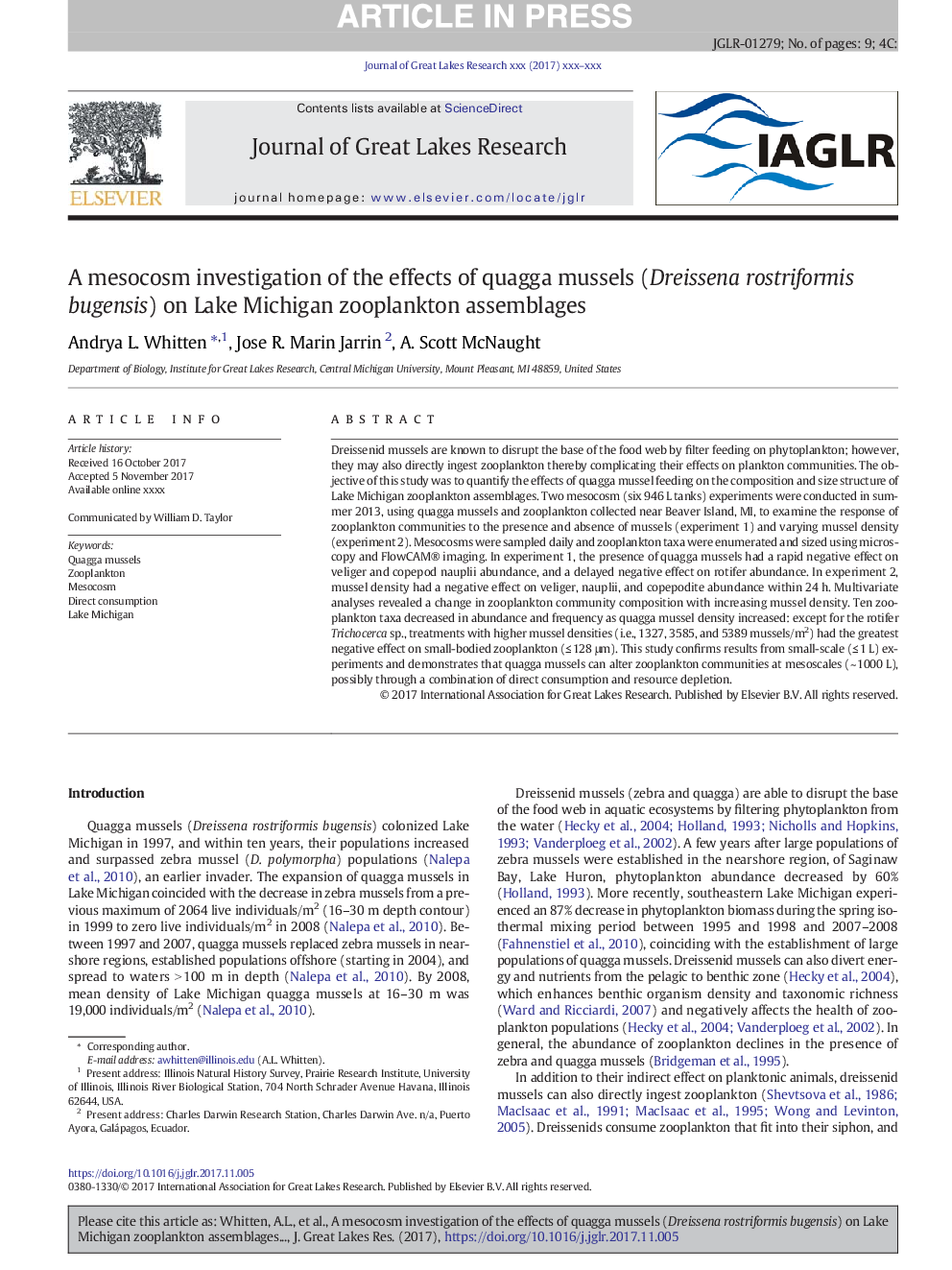| Article ID | Journal | Published Year | Pages | File Type |
|---|---|---|---|---|
| 8849158 | Journal of Great Lakes Research | 2018 | 9 Pages |
Abstract
Dreissenid mussels are known to disrupt the base of the food web by filter feeding on phytoplankton; however, they may also directly ingest zooplankton thereby complicating their effects on plankton communities. The objective of this study was to quantify the effects of quagga mussel feeding on the composition and size structure of Lake Michigan zooplankton assemblages. Two mesocosm (six 946 L tanks) experiments were conducted in summer 2013, using quagga mussels and zooplankton collected near Beaver Island, MI, to examine the response of zooplankton communities to the presence and absence of mussels (experiment 1) and varying mussel density (experiment 2). Mesocosms were sampled daily and zooplankton taxa were enumerated and sized using microscopy and FlowCAM® imaging. In experiment 1, the presence of quagga mussels had a rapid negative effect on veliger and copepod nauplii abundance, and a delayed negative effect on rotifer abundance. In experiment 2, mussel density had a negative effect on veliger, nauplii, and copepodite abundance within 24 h. Multivariate analyses revealed a change in zooplankton community composition with increasing mussel density. Ten zooplankton taxa decreased in abundance and frequency as quagga mussel density increased: except for the rotifer Trichocerca sp., treatments with higher mussel densities (i.e., 1327, 3585, and 5389 mussels/m2) had the greatest negative effect on small-bodied zooplankton (â¤Â 128 μm). This study confirms results from small-scale (â¤Â 1 L) experiments and demonstrates that quagga mussels can alter zooplankton communities at mesoscales (~ 1000 L), possibly through a combination of direct consumption and resource depletion.
Related Topics
Physical Sciences and Engineering
Earth and Planetary Sciences
Earth and Planetary Sciences (General)
Authors
Andrya L. Whitten, Jose R. Marin Jarrin, A. Scott McNaught,
